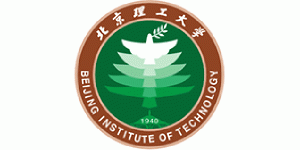大脑结构与功能是21世纪最具挑战性的科学问题,相关科学知识既能够解析人类思维的产生和运作方式,也能够与信息通信技术有效融合,催生出人工智能、类脑智能、数字社会等新兴业态。我国提出了“以脑认知的神经基础为主体”“以脑疾病及脑智能为两翼”的中国脑计划布局,其中将脑机接口作为“类脑智能计算与脑机智能”的关键技术。为此,中国科学院学部工作局设立了由中国科学院院士、北京大学程和平教授牵头的“脑机接口关键科学问题、关键核心技术及其布局研究”咨询项目,全面梳理分析脑机接口的关键科学问题和技术挑战以及相关的发展路径。
在程和平院士和本刊特邀编辑王振宇博士的推动下,《科学与社会》组织出版了“脑机接口”专题,从脑机接口技术进展与前景、社会影响、伦理风险、公共治理等不同角度对脑机接口技术与社会的关系进行探讨。希望通过本专题的出版,能够吸引社会各界人士关注脑机接口,共同为脑机接口技术的健康发展以及更好地服务于社会、提高人类福祉做出努力。



脑机接口技术发展现状
及未来展望
|
[1] |
Zander TO, Kothe C. Towards Passive Brain-computer Interfaces: Applying Brain-computer Interface Technology to Human-machine Systems in General. Journal of Neural Engineering, 2011, 8(2): 025005. DOI: 10.1088/1741-2560/8/2/025005. |
|
[2] |
Wolpaw JR, Birbaumer N, Heetderks WJ, et al. Brain-computer Interface Technology: A Review of the First International Meeting. IEEE Transactions on Rehabilitation Engineering: A Publication of the IEEE Engineering in Medicine and Biology Society, 2000, 8(2): 164-173. DOI: 10.1109/TRE.2000.847807. |
|
[3] |
Mudgal SK, Sharma SK, Chaturvedi J, et al. Brain Computer Interface Advancement in Neurosciences: Applications and Issues. Interdisciplinary Neurosurgery, 2020, (20): 100694. |
|
[4] |
|
|
[5] |
|
|
[6] |
Wang Y, Wang R, Gao X, et al. A Practical VEP-based Brain-computer Interface. IEEE Transactions on Neural Systems and Rehabilitation Engineering: A Publication of the IEEE Engineering in Medicine and Biology Society, 2006, 14(2): 234-239. |
|
[7] |
Wolpaw JR, McFarland DJ, Neat GW, et al. An EEG-based Brain-computer Interface for Cursor Control. Electroencephalography and Clinical Neurophysiology, 1991, 78(3): 252-259. DOI: 10.1016/0013-4694(91)90040-B. |
|
[8] |
Abiri R, Borhani S, Sellers EW, et al. A Comprehensive Review of EEG-based Brain-computer Interface Paradigms. Journal of Neural Engineering, 2019, 16(1): 011001. DOI: 10.1088/1741-2552/aaf12e. |
|
[9] |
Rashid M, Sulaiman N, P P Abdul Majeed A, et al. Current Status, Challenges, and Possible Solutions of EEG-Based Brain-Computer Interface: A Comprehensive Review. Frontiers in Neurorobotics, 2020(14): Article 25. |
|
[10] |
Silversmith DB, Abiri R, Hardy NF, et al. Plug-and-play Control of a Brain-computer Interface Through Neural Map Stabilization. Nature Biotechnology, 2021, 39(3): 326-335. DOI: 10.1038/s41587-020-0662-5. |
|
[11] |
Saha S, Mamun KA, Ahmed K, et al. Progress in Brain Computer Interface: Challenges and Opportunities. Frontiers in Systems Neuroscience, 2021, (15): 578875. |
|
[12] |
陈小刚, 陈菁菁, 刘冰川, 等. 2022年脑机接口研究进展. 信号处理, 2023, 39(8): 1355-1366. |
|
[13] |
Farwell LA, Donchin E. Talking Off the Top of Your Head: toward a Mental Prosthesis Utilizing Event-related Brain Potentials. Electroencephalography and Clinical Neurophysiology, 1988, 70(6): 510-523. DOI: 10.1016/0013-4694(88)90149-6. |
|
[14] |
Vidal JJ. Toward Direct Brain-computer Communication. Annual Review of Biophysics and Bioengineering, 1973, 2(1): 157-180. DOI: 10.1146/annurev.bb.02.060173.001105. |
|
[15] |
Birbaumer N, Ghanayim N, Hinterberger T, et al. A Spelling Device for the Paralysed. Nature, 1999, 398(6725): 297-298. DOI: 10.1038/18581. |
|
[16] |
Alcaide-Aguirre RE, Warschausky SA, Brown D, et al. Asynchronous Brain-computer Interface for Cognitive Assessment in People with Cerebral Palsy. Journal of Neural Engineering, 2017, 14(6): 066001. DOI: 10.1088/1741-2552/aa7fc4. |
|
[17] |
Shahriari Y, Vaughan TM, McCane LM, et al. An Exploration of BCI Performance Variations in People with Amyotrophic Lateral Sclerosis Using Longitudinal EEG Data. Journal of Neural Engineering, 2019, 16(5): 056031. DOI: 10.1088/1741-2552/ab22ea. |
|
[18] |
Vansteensel MJ, Pels EGM, Bleichner MG, et al. Fully Implanted Brain-Computer Interface in a Locked-In Patient with ALS. New England Journal of Medicine, 2016, 375(21): 2060-2066. DOI: 10.1056/NEJMoa1608085. |
|
[19] |
Donchin E, Spencer KM, Wijesinghe R. The Mental Prosthesis: Assessing the Speed of a P300-based Brain-computer Interface. IEEE Transactions on Rehabilitation Engineering, 2000, 8(2): 174-179. DOI: 10.1109/86.847808. |
|
[20] |
Aricò P, Borghini G, Di Flumeri G, et al. Adaptive Automation Triggered by EEG-Based Mental Workload Index: A Passive Brain-Computer Interface Application in Realistic Air Traffic Control Environment. Frontiers in Human Neuroscience, 2016, (10): 539. |
|
[21] |
Wei CS, Wang YT, Lin CT, et al. Toward Drowsiness Detection Using Non-hair-Bearing EEG-Based Brain-Computer Interfaces. IEEE Transactions on Neural Systems and Rehabilitation Engineering, 2018, 26(2): 400-406. DOI: 10.1109/TNSRE.2018.2790359. |
|
[22] |
Wu D, Lance BJ, Lawhern VJ, et al. EEG-Based User Reaction Time Estimation Using Riemannian Geometry Features. IEEE Transactions on Neural Systems and Rehabilitation Engineering, 2017, 25(11): 2157-2168. DOI: 10.1109/TNSRE.2017.2699784. |
|
[23] |
Vourvopoulos A, Pardo OM, Lefebvre S, et al. Effects of a Brain-Computer Interface With Virtual Reality (VR) Neurofeedback: A Pilot Study in Chronic Stroke Patients. Frontiers in Human Neuroscience, 2019, (13): 460405. |
|
[24] |
Horki P, Solis-Escalante T, Neuper C, et al. Combined Motor Imagery and SSVEP Based BCI Control of a 2 DoF Artificial Upper Limb. Medical & Biological Engineering & Computing, 2011, 49(5): 567-577. |
|
[25] |
Singh AK, Wang YK, King JT, et al. Extended Interaction With a BCI Video Game Changes Resting-State Brain Activity. IEEE Transactions on Cognitive and Developmental Systems, 2020, 12(4): 809-823. DOI: 10.1109/TCDS.2020.2985102. |
|
[26] |
Choi B, Jo S. A Low-Cost EEG System-Based Hybrid Brain-Computer Interface for Humanoid Robot Navigation and Recognition. PLOS ONE, 2013, 8(9): e74583. DOI: 10.1371/journal.pone.0074583. |
|
[27] |
|
|
[28] |
Brunner C, Birbaumer N, Blankertz B, et al. BNCI Horizon 2020: towards a Roadmap for the BCI Community. Brain-Computer Interfaces, 2015, 2(1): 1-10. DOI: 10.1080/2326263X.2015.1008956. |
|
[29] |
Min BK, Marzelli MJ, Yoo SS. Neuroimaging-based Approaches in the Brain-computer Interface. Trends in Biotechnology, 2010, 28(11): 552-560. DOI: 10.1016/j.tibtech.2010.08.002. |
|
[30] |
Rosenfeld JV, Wong YT. Neurobionics and the Brain-computer Interface: Current Applications and Future Horizons. Medical Journal of Australia, 2017, 206(8): 363-368. DOI: 10.5694/mja16.01011. |
|
[31] |
Matthews F, Pearlmutter BA, Wards TE, et al. Hemodynamics for Brain-Computer Interfaces. IEEE Signal Processing Magazine, 2008, 25(1): 87-94. DOI: 10.1109/MSP.2008.4408445. |
|
[32] |
Fukuma R, Yanagisawa T, Saitoh Y, et al. Real-Time Control of a Neuroprosthetic Hand by Magnetoencephalographic Signals from Paralysed Patients. Scientific Reports, 2016, 6(1): 21781. DOI: 10.1038/srep21781. |
|
[33] |
Kaas A, Goebel R, Valente G, et al. Topographic Somatosensory Imagery for Real-Time fMRI Brain-Computer Interfacing. Frontiers in Human Neuroscience, 2019, (13): 427. |
|
[34] |
Faress A, Chau T. Towards a Multimodal Brain-computer Interface: Combining fNIRS and fTCD Measurements to Enable Higher Classification Accuracy. NeuroImage, 2013, (77): 186-194. |
|
[35] |
Lu J, Mamun KA, Chau T. Pattern Classification to Optimize the Performance of Transcranial Doppler Ultrasonography-based Brain Machine Interface. Pattern Recognition Letters, 2015, (66): 135-143. |
|
[36] |
Khalaf A, Sejdic E, Akcakaya M. A Novel Motor Imagery Hybrid Brain Computer Interface Using EEG and Functional Transcranial Doppler Ultrasound. Journal of Neuroscience Methods, 2019, (313): 44-53. |
|
[37] |
Pandarinath C, Nuyujukian P, Blabe CH, et al. High Performance Communication by People with Paralysis Using an Intracortical Brain-computer Interface. Elife, 2017, (6): e18554. |
|
[38] |
Kaiju T, Doi K, Yokota M, et al. High Spatiotemporal Resolution ECoG Recording of Somatosensory Evoked Potentials with Flexible Micro-Electrode Arrays. Frontiers in Neural Circuits, 2017, (11): 20. |
|
[39] |
Lajoie G, Krouchev NI, Kalaska JF, et al. Correlation-based Model of Artificially Induced Plasticity in Motor Cortex by a Bidirectional Brain-computer Interface. PLOS Computational Biology, 2017, 13(2): e1005343. DOI: 10.1371/journal.pcbi.1005343. |
|
[40] |
Darvishi S, Gharabaghi A, Boulay CB, et al. Proprioceptive Feedback Facilitates Motor Imagery-Related Operant Learning of Sensorimotor β-Band Modulation. Frontiers in Neuroscience, Frontiers, 2017, (11): 60. |
|
[41] |
Bhattacharyya S, Clerc M, Hayashibe M. Augmenting Motor Imagery Learning for Brain-Computer Interfacing Using Electrical Stimulation as Feedback. IEEE Transactions on Medical Robotics and Bionics, 2019, 1(4): 247-255. DOI: 10.1109/TMRB.2019.2949854. |
|
[42] |
Bockbrader M, Annetta N, Friedenberg D, et al. Clinically Significant Gains in Skillful Grasp Coordination by an Individual with Tetraplegia Using an Implanted Brain-Computer Interface with Forearm Transcutaneous Muscle Stimulation. Archives of Physical Medicine and Rehabilitation, 2019, 100(7): 1201-1217. DOI: 10.1016/j.apmr.2018.07.445. |
|
[43] |
Murovec N, Heilinger A, Xu R, et al. Effects of a Vibro-Tactile P300 Based Brain-Computer Interface on the Coma Recovery Scale-Revised in Patients With Disorders of Consciousness. Frontiers in Neuroscience, 2020, (14): 294. |
|
[44] |
Gonçalves SI, de Munck JC, Pouwels PJW, et al. Correlating the Alpha Rhythm to BOLD Using Simultaneous EEG/fMRI: Inter-subject Variability. NeuroImage, 2006, 30(1): 203-213. DOI: 10.1016/j.neuroimage.2005.09.062. |
|
[45] |
Käthner I, Wriessnegger SC, Müller-Putz GR, et al. Effects of Mental Workload and Fatigue on the P300, Alpha and Theta Band Power during Operation of an ERP (P300) Brain-computer Interface. Biological Psychology, 2014, (102): 118-129. |
|
[46] |
Calhoun VD, Adali T. Time-Varying Brain Connectivity in fMRI Data: Whole-brain Data-driven Approaches for Capturing and Characterizing Dynamic States. IEEE Signal Processing Magazine, 2016, 33(3): 52-66. DOI: 10.1109/MSP.2015.2478915. |
|
[47] |
Bashashati A, Fatourechi M, Ward RK, et al. A Survey of Signal Processing Algorithms in Brain-computer Interfaces Based on Electrical Brain Signals. Journal of Neural Engineering, 2007, 4(2): R32. DOI: 10.1088/1741-2560/4/2/R03. |
|
[48] |
Pfurtscheller G, Neuper C. Motor Imagery and Direct Brain-computer Communication. Proceedings of the IEEE, 2001, 89(7): 1123-1134. DOI: 10.1109/5.939829. |
|
[49] |
Lawhern VJ, Solon AJ, Waytowich NR, et al. EEGNet: A Compact Convolutional Neural Network for EEG-based Brain-computer Interfaces. Journal of Neural Engineering, 2018, 15(5): 056013. DOI: 10.1088/1741-2552/aace8c. |
|
[50] |
Schirrmeister RT, Springenberg JT, Fiederer LDJ, et al. Deep Learning with Convolutional Neural Networks for EEG Decoding and Visualization. Human Brain Mapping, 2017, 38(11): 5391-5420. DOI: 10.1002/hbm.23730. |
|
[51] |
Kasahara K, DaSalla CS, Honda M, et al. Neuroanatomical Correlates of Brain-computer Interface Performance. NeuroImage, 2015, (110): 95-100. |
|
[52] |
Lotte F, Congedo M, Lécuyer A, et al. A Review of Classification Algorithms for EEG-based Brain-computer Interfaces. Journal of Neural Engineering, 2007, 4(2): R1-R13. DOI: 10.1088/1741-2560/4/2/R01. |
|
[53] |
Mane SAM, Shinde A. StressNet: Hybrid Model of LSTM and CNN for Stress Detection from Electroencephalogram Signal (EEG). Results in Control and Optimization, 2023, (11): 100231. |
|
[54] |
Cecotti H, Graser A. Convolutional Neural Networks for P300 Detection with Application to Brain-Computer Interfaces. IEEE Transactions on Pattern Analysis and Machine Intelligence, 2010, 33(3): 433-445. |
|
[55] |
Craik A, He Y, Contreras-Vidal JL. Deep Learning for Electroencephalogram (EEG) Classification Tasks: A Review. Journal of Neural Engineering, 2019, 16(3): 031001. DOI: 10.1088/1741-2552/ab0ab5. |
|
[56] |
Kleih SC, Kübler A. Empathy, Motivation, and P300 BCI Performance. Frontiers in Human Neuroscience, 2013, (7): 642. |
|
[57] |
拉杰什 P. N. 拉奥. 脑机接口导论. 张莉, 陈民铀 译. 北京: 机械工业出版社, 2016. |
|
[58] |
Kaufmann T, Vögele C, Sütterlin S, et al. Effects of Resting Heart Rate Variability on Performance in the P300 Brain-computer Interface. International Journal of Psychophysiology, 2012, 83(3): 336-341. DOI: 10.1016/j.ijpsycho.2011.11.018. |
|
[59] |
Mantini D, Perrucci MG, Del Gratta C, et al. Electrophysiological Signatures of Resting State Networks in the Human Brain. Proceedings of the National Academy of Sciences, 2007, 104(32): 13170-13175. DOI: 10.1073/pnas.0700668104. |
|
[60] |
Vidaurre C, Blankertz B. Towards a Cure for BCI Illiteracy. Brain Topography, 2010, 23(2): 194-198. DOI: 10.1007/s10548-009-0121-6. |
|
[61] |
Sporns O. Structure and Function of Complex Brain Networks. Dialogues in Clinical Neuroscience, 2013, 15(3): 247-262. DOI: 10.31887/DCNS.2013.15.3/osporns. |
|
[62] |
吴朝晖, 俞一鹏, 潘纲, 等. 脑机融合系统综述. 生命科学, 2014, 26(6): 645-649. |
|
[63] |
Shaeri M, Shin U, Yadav A, et al. A 2.46-mm ^2 Miniaturized Brain-Machine Interface (MiBMI) Enabling 31-Class Brain-to-Text Decoding. https://ieeexplore.ieee.org/document/10643873.[2024-10-1]. |
|
[64] |
Benchetrit Y, Banville H, King JR. Brain Decoding: toward Real-time Reconstruction of Visual Perception. https://scholar.ucas.ac.cn/https/77726476706e69737468656265737421f1e55995317e674279/abs/2310.19812.[2024-10-1]. |
|
[65] |
陶虎, 孙鎏炀. 实现“人机物”三元融合——谈脑机接口中的人脑优势发挥. 前沿科学, 2021, 15(2): 104-108. DOI: 10.3969/j.issn.1673-8128.2021.02.024. |
|
[66] |
Yang D, Nguyen TH, Chung WY. A Bipolar-Channel Hybrid Brain-Computer Interface System for Home Automation Control Utilizing Steady-State Visually Evoked Potential and Eye-Blink Signals. Sensors, 2020, 20(19): 5474. DOI: 10.3390/s20195474. |
|
[67] |
Wu D, King JT, Chuang CH, et al. Spatial Filtering for EEG-Based Regression Problems in Brain-Computer Interface (BCI). IEEE Transactions on Fuzzy Systems, 2018, 26(2): 771-781. DOI: 10.1109/TFUZZ.2017.2688423. |
|
[68] |
Coogan CG, He B. Brain-Computer Interface Control in a Virtual Reality Environment and Applications for the Internet of Things. IEEE Access, 2018, (6): 10840-10849. |
|
[69] |
Zhang X, Yao L, Zhang S, et al. Internet of Things Meets Brain-Computer Interface: A Unified Deep Learning Framework for Enabling Human-Thing Cognitive Interactivity. IEEE Internet of Things Journal, 2019, 6(2): 2084-2092. DOI: 10.1109/JIOT.2018.2877786. |
|
[70] |
Chu NNY. Surprising Prevalence of Electroencephalogram Brain-Computer Interface to Internet of Things [Future Directions]. IEEE Consumer Electronics Magazine, 2017, 6(2): 31-39. DOI: 10.1109/MCE.2016.2640599. |
|
[71] |
Aloise F, Schettini F, Aricò P, et al. P300-based Brain-computer Interface for Environmental Control: An Asynchronous Approach. Journal of Neural Engineering, 2011, 8(2): 025025. DOI: 10.1088/1741-2560/8/2/025025. |
|
[72] |
阮梅花, 张丽雯, 凌婕凡, 等. 2023年脑机接口领域发展态势. 生命科学, 2024, 36(1): 39-47. |
|
[73] |
Wang J, Wang C, Cai P, et al. Artificial Sense Technology: Emulating and Extending Biological Senses. ACS Nano, 2021, 15(12): 18671-18678. DOI: 10.1021/acsnano.1c10313. |
|
[74] |
Berger TW, Hampson RE, Song D, et al. A Cortical Neural Prosthesis for Restoring and Enhancing Memory. Journal of Neural Engineering, 2011, 8(4): 046017. DOI: 10.1088/1741-2560/8/4/046017. |
|
[75] |
张喆, 赵旭, 马艺昕, 等. 脑机接口技术伦理规范考量. 生物医学工程学杂志, 2023, 40(2): 358-364. DOI: 10.7507/1001-5515.202208058. |
|
[76] |
王高峰, 张志领. 算法伦理视域下的脑机接口伦理问题研究. 自然辩证法研究, 2022, 38(7): 68-73. |
Brain-Computer Interface Technology: Current development status and future outlook
肖松,湖北省科技信息研究院副研究员。研究方向为科技管理、科技政策与战略规划。
程和平,北京大学教授,中国科学院院士。研究方向为钙信号、线粒体功能研究、科研仪器创制。
吴朝晖,浙江大学教授,中国科学院院士。研究方向为人工智能、脑机智能、服务计算。
张旭,广东省智能科学与技术研究院研究员,中国科学院院士。研究方向为神经科学、神经系统疾病的分子细胞生物学机理。
王以政,军事科学院军事医学研究院研究员,中国科学院院士。研究方向为脑疾病与类脑研究。
陈婧,北京大学研究员。研究方向为语音信息处理、机器听觉、言语神经解码。
潘纲,浙江大学教授。研究方向为人工智能、脑机接口、类脑计算。
陶虎,中国科学院上海微系统与信息技术研究所研究员。研究方向为脑机接口、人工智能、微纳光机电系统。
尧德中,电子科技大学教授。研究方向为神经信息与脑器交互。
段小洁,北京大学长聘副教授。研究方向为生物医学工程。
王刚,军事科学院军事医学研究院副研究员。研究方向为类脑视觉计算。
通信作者:
程和平,邮箱地址:chengp@pku.edu.cn。
项目资助:
中国科学院学部咨询项目“脑机接口关键科学问题、关键核心技术及其布局研究”(2023-ZW07-A-026)。










科学与社会
科学与社会的相互影响
科学与传统的文化传承
科学与人文的交融碰撞
科学与思想的自由讨论













































